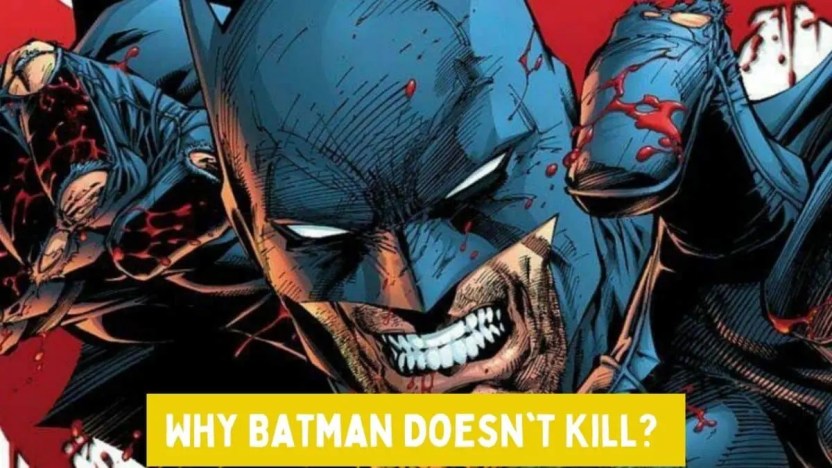In the revealing article “Why Batman Doesn’t Kill?” the mystery behind Batman’s staunch no-kill policy is explored. This exploration delves into two primary reasons: the ‘DC reason,’ which refers to the narrative and character motivations established by DC Comics, and the ‘moral reason,’ highlighting Batman’s personal ethical code.
This insight offers a deeper understanding of one of the most fundamental aspects of the Dark Knight’s character, shedding light on the intricate layers that define his actions and decisions.
Why Batman Doesn’t Kill?
Moral Reason

Batman, one of the most iconic comic book characters, is known for his strict moral code, a significant part of which is his refusal to kill. Here are five moral reasons why Batman doesn’t kill:
- Personal Moral Code: Batman, also known as Bruce Wayne, has a personal moral code that prohibits him from taking a life. This code is rooted in the trauma of witnessing his parents’ murder as a child. He believes that killing would make him no better than the criminals he fights against.
- Fear of Losing Control: Batman is aware of his own darkness and the potential for violence within himself. He fears that if he starts killing, he might not be able to stop, leading him down a path similar to the criminals he battles.
- Belief in Justice System: Despite its flaws, Batman believes in the justice system. He sees himself as an instrument to bring criminals to justice, not as a judge and executioner. By not killing, he leaves the final judgment of criminals to the legal system.
- Symbolic Importance: Batman aims to be a symbol of hope and justice in Gotham City. By refraining from killing, he sets a standard for others to follow and maintains his role as a symbol of incorruptible justice, rather than a vigilante who takes the law into his own hands.
- Respect for Life: At the core of Batman’s character is a deep respect for life. He understands the value of every individual, regardless of their deeds. This respect for life reinforces his commitment to finding non-lethal ways to stop criminals.
DC Reason

Explore the intriguing ethos of Batman, DC’s iconic Dark Knight, through five compelling reasons given by DC that define why he adheres to a strict no-kill policy, shaping his actions and decisions in the complex world of Gotham City.
- Batman’s Early Days: Batman’s no-kill rule wasn’t always so clear-cut. In his 1939 debut in Detective Comics #27, Batman was a much more ruthless character, occasionally killing his enemies. This portrayal mirrored the pulp heroes of the time. However, editorial decisions, driven by concerns over the comic’s young readership and rising moral panic, led to a significant shift.
- The Oath: Bill Finger, co-creator of Batman, was instrumental in defining Batman’s aversion to killing. Finger regretted the initial portrayal and was relieved to move Batman away from lethality. The tragic murder of Bruce Wayne’s parents laid the foundation for Batman’s strict moral code, as he vowed to never take a life, understanding the profound pain it causes.
- Psychological Interpretations: Darwyn Cooke’s “Batman: Ego” offers a profound psychological exploration of Batman’s rule. Here, Batman’s internal struggle is depicted as a battle with his darker impulses. The fear that giving in to killing even once could unleash his inner monster is a recurring theme in Batman narratives.
- Influence of Sidekicks: The introduction of Robin marked a turning point in Batman’s character development. His responsibility towards his protégés and the example he sets for them reinforced his commitment to non-lethality. Batman’s no-kill policy is not only a personal moral stance but also a lesson for future generations of heroes.
Exceptions and Challenges
Despite the above rule, Batman has found himself in morally grey areas, especially in adaptations and later comics. Situations involving undead enemies or artificial intelligences raise questions about the nature of killing. Furthermore, directors like Tim Burton, Christopher Nolan, and Zack Snyder have depicted Batman in scenarios where his rule is bent or broken, reflecting different eras and interpretations of the character.
These reasons combine to form the foundation of Batman’s character and his approach to fighting crime in Gotham City, making him a unique and enduring figure in the world of superheroes.
Also Read: Top 10 Batman Villains of All Time (Ranked)



